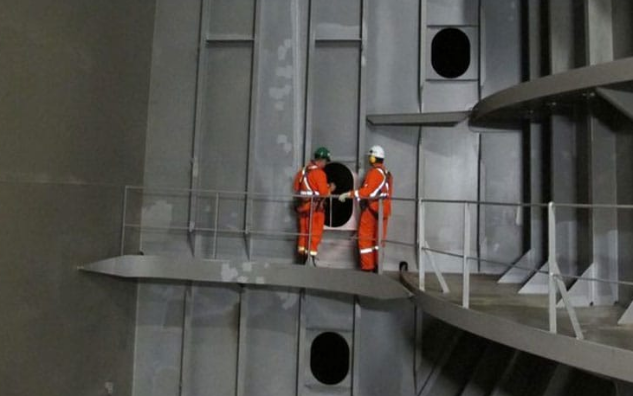
Storage tanks play a quiet but crucial role in many industrial and commercial systems. They hold fuel, chemicals, and other important materials that keep operations moving. But like any piece of equipment, tanks don’t last forever—and without regular inspections, small issues can turn into big problems.
If your facility relies on above-ground or underground storage tanks, scheduling consistent checkups isn’t just recommended—it’s essential. Regular inspections can catch wear, corrosion, or stress points early, helping you avoid costly repairs, environmental damage, and safety hazards.
Why Inspections Should Never Be Skipped
Tanks are built to be strong, but they’re constantly under pressure—literally and figuratively. Over time, even high-quality tanks develop weaknesses due to age, exposure, and use. Without inspections, those weaknesses can remain hidden until a leak, failure, or contamination event occurs.
Regular inspections help you:
- Detect corrosion or cracking early
- Ensure gauges, valves, and fittings are working correctly
- Catch pressure irregularities before they become safety issues
- Stay compliant with environmental and safety regulations
- Plan repairs before a complete system breakdown
It’s not about checking off a box—it’s about knowing what’s happening inside and around your tank before something goes wrong.
Key Areas to Inspect
A thorough tank check involves more than a quick glance at the outside. Effective inspections cover:
- The tank shell: Look for rust, dents, discoloration, or structural stress.
- Weld seams and joints: These are common weak points where cracking or separation can occur.
- Fittings and nozzles: Leaks often develop at connection points where the seal has worn.
- Tank base or supports: Shifting foundations or uneven settling can put pressure on the tank.
- Interior surfaces: For tanks storing fuel or chemicals, buildup and corrosion inside can be just as dangerous.
- Vent and overflow systems: These components prevent overpressure and must be functional.
- Gauges and monitors: Faulty readings could point to internal issues or sensor problems.
Each of these areas needs attention during routine maintenance—and even more scrutiny if the tank is approaching its expected lifespan.
Signs It’s Time for an Inspection
Sometimes your system tells you it needs attention. Don’t ignore these red flags:
- Increased fuel or fluid use with no clear explanation
- Moisture, stains, or unusual smells near the tank base
- Fluctuating pressure readings or level indicators
- Changes in product quality or clarity
- Audible hissing or venting noises
These warning signs suggest a deeper issue that should be addressed quickly.
Inspection Frequency: What’s Right for You?
How often you inspect your tank depends on the material, location, and usage. General guidelines include:
- Annually for most above-ground storage tanks
- Every 3–5 years for underground tanks, with more frequent internal checks if risk factors are present
- After any incident involving pressure changes, spills, or mechanical failure
- Before and after periods of heavy use, such as seasonal fuel storage
You may also be subject to state or federal inspection requirements depending on what’s stored and how your system is used.
To better understand local expectations and best practices, this resource on storage tank inspection outlines critical steps and regulations for keeping tanks in check.
Who Should Perform the Inspection?
While daily checks can be done in-house, formal inspections should be handled by trained professionals who understand storage system design, compliance standards, and safety protocols. A qualified inspector can:
- Use ultrasonic thickness testing to measure wall integrity
- Examine hard-to-reach areas with internal scopes
- Review and interpret historical data for early trend detection
- Document findings in a way that meets inspection and insurance standards
- Recommend repair or replacement timelines based on condition
Having an outside expert provide regular assessments adds an extra layer of security—and often reveals issues you wouldn’t find on your own.
Turning Inspections Into Long-Term Strategy
Regular checkups shouldn’t be reactive. Build inspections into your ongoing maintenance calendar and keep detailed logs of each visit. Use those records to plan:
- Preventative repairs
- Re-coating or relining projects
- Equipment upgrades
- Future replacements
This kind of planning allows you to spread out costs, minimize downtime, and make smarter decisions about how to extend the life of your tanks.
Safety, Compliance, and Peace of Mind
A small crack can become a big spill. A clogged vent can lead to dangerous pressure buildup. A faulty gauge can mislead your team until it’s too late. Inspections don’t just prevent problems—they protect your people, your property, and your operations.
Investing in regular tank checkups is one of the easiest ways to avoid emergencies and keep your storage systems running reliably for years to come.

